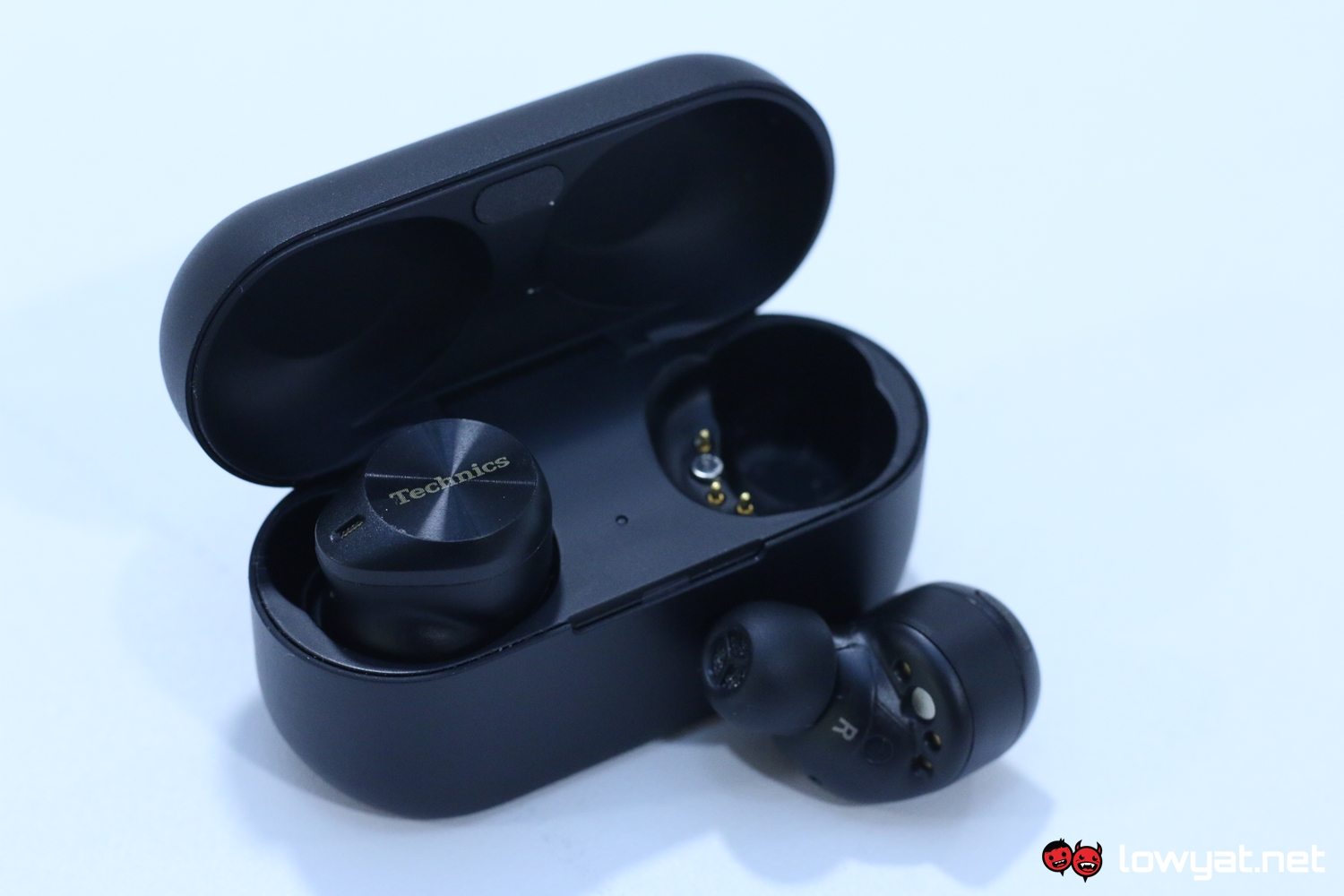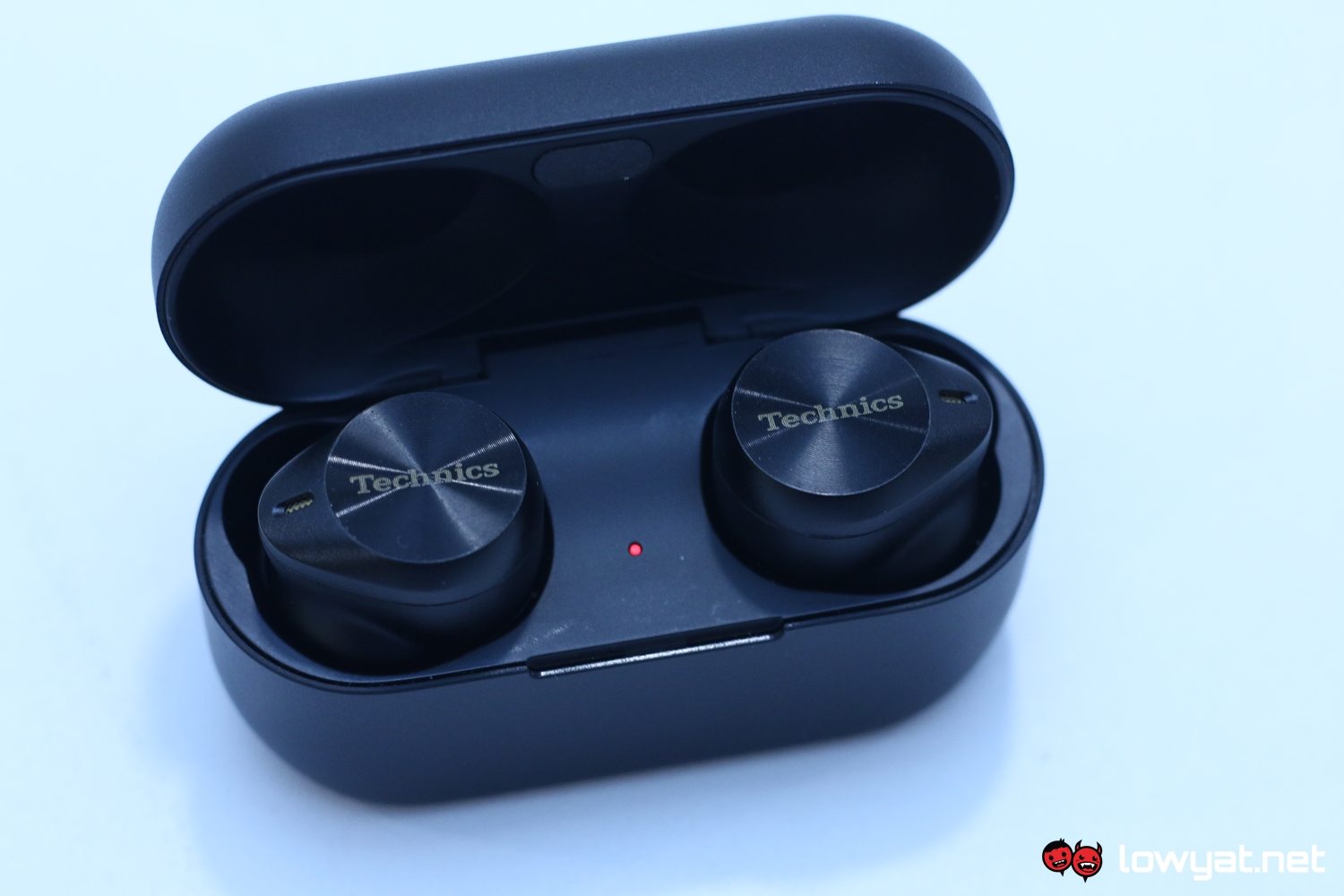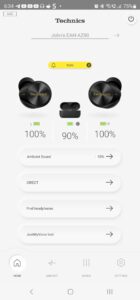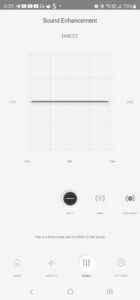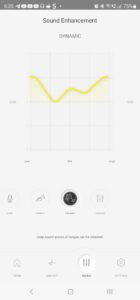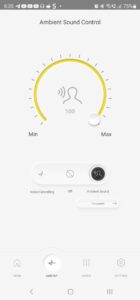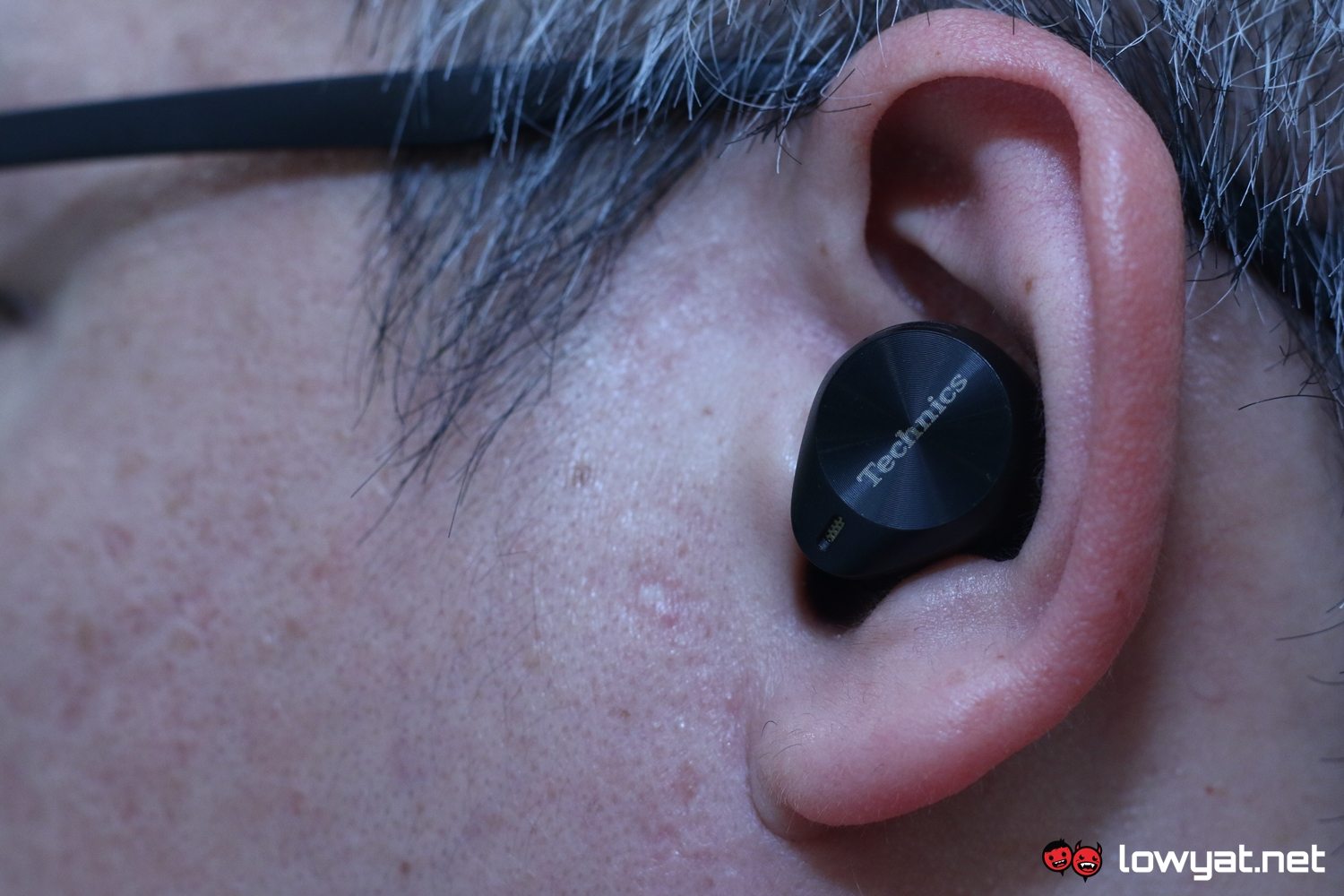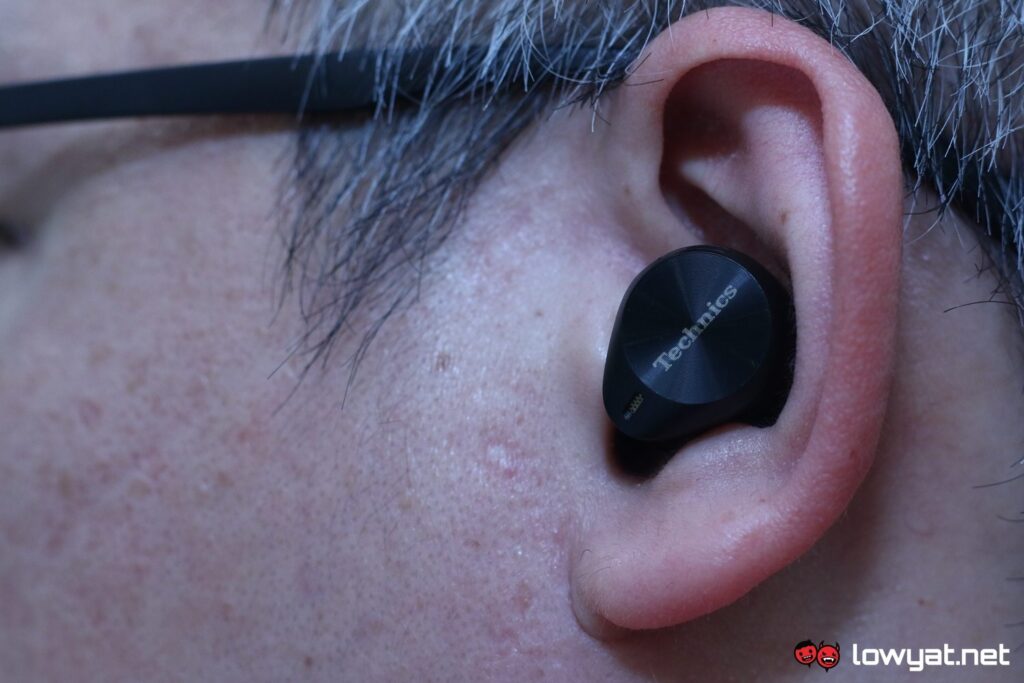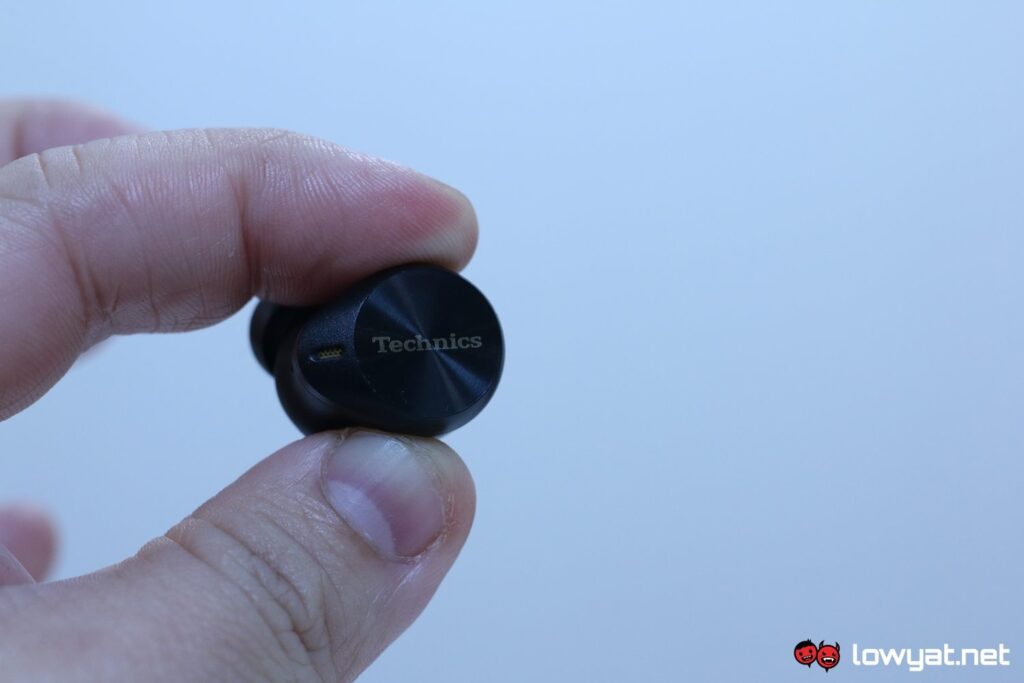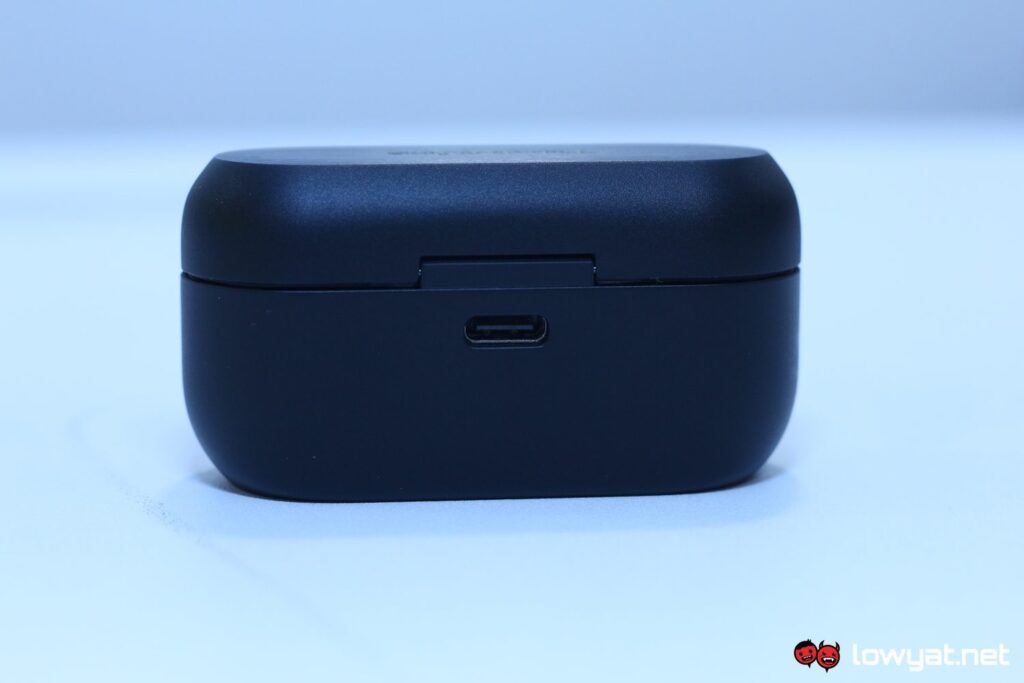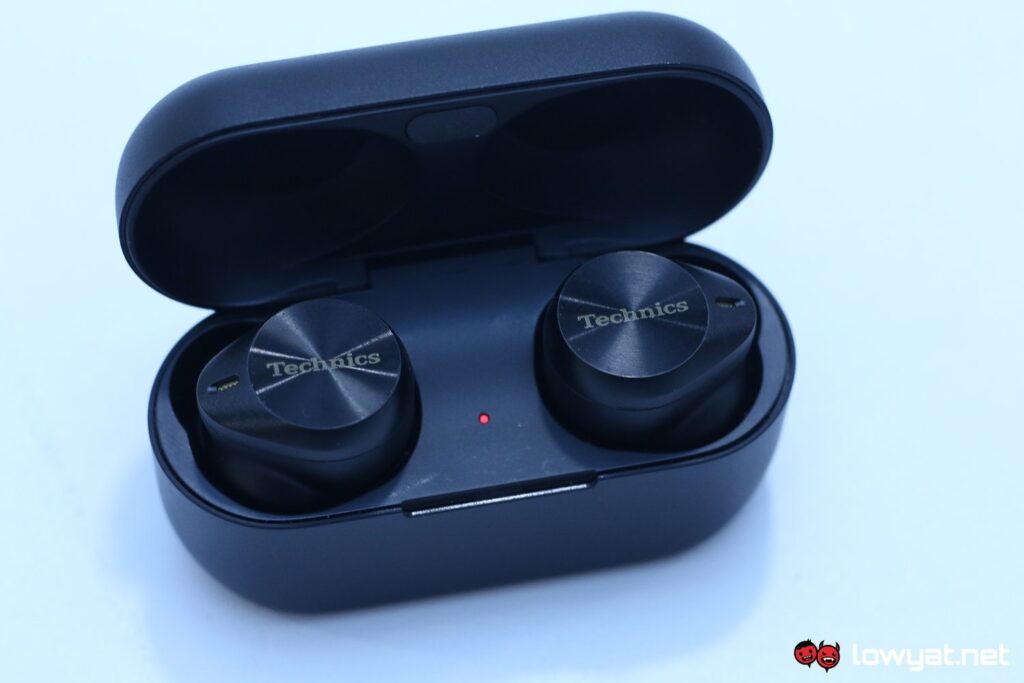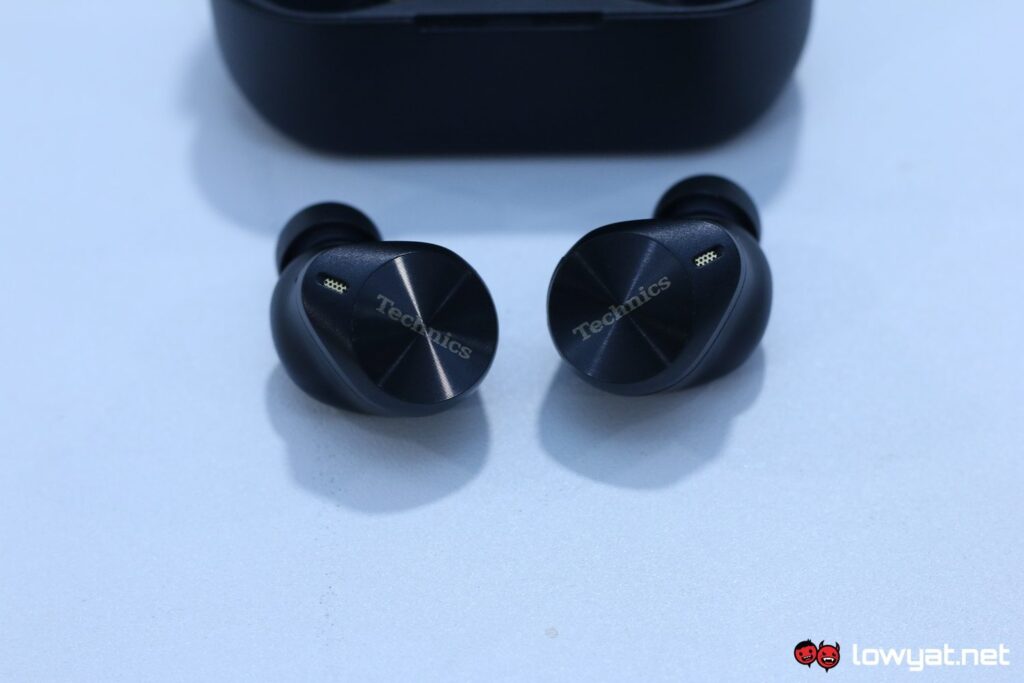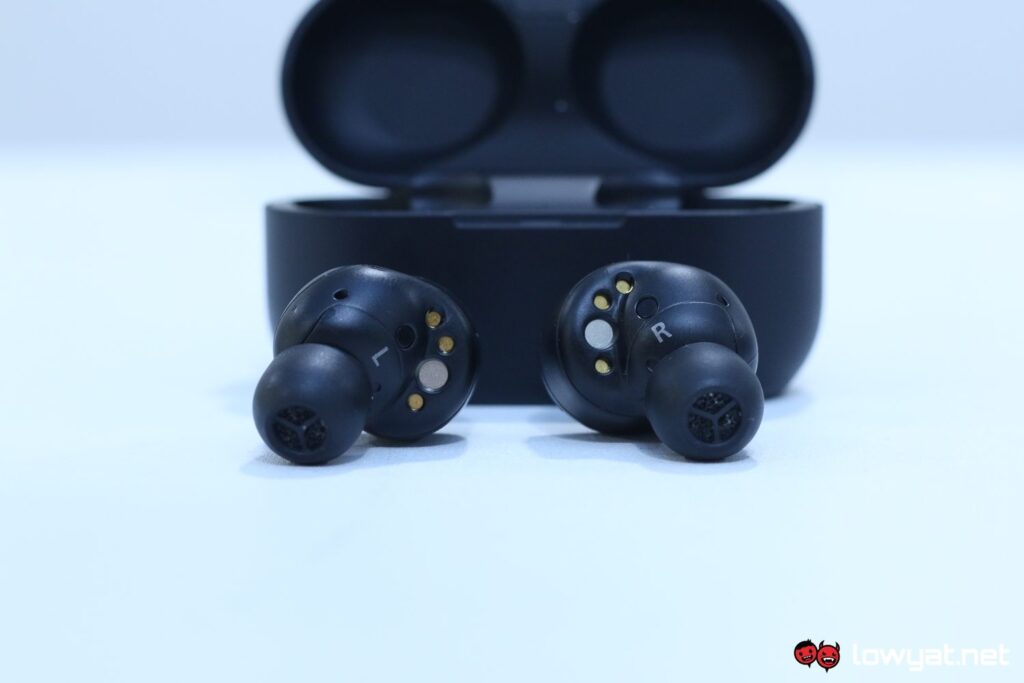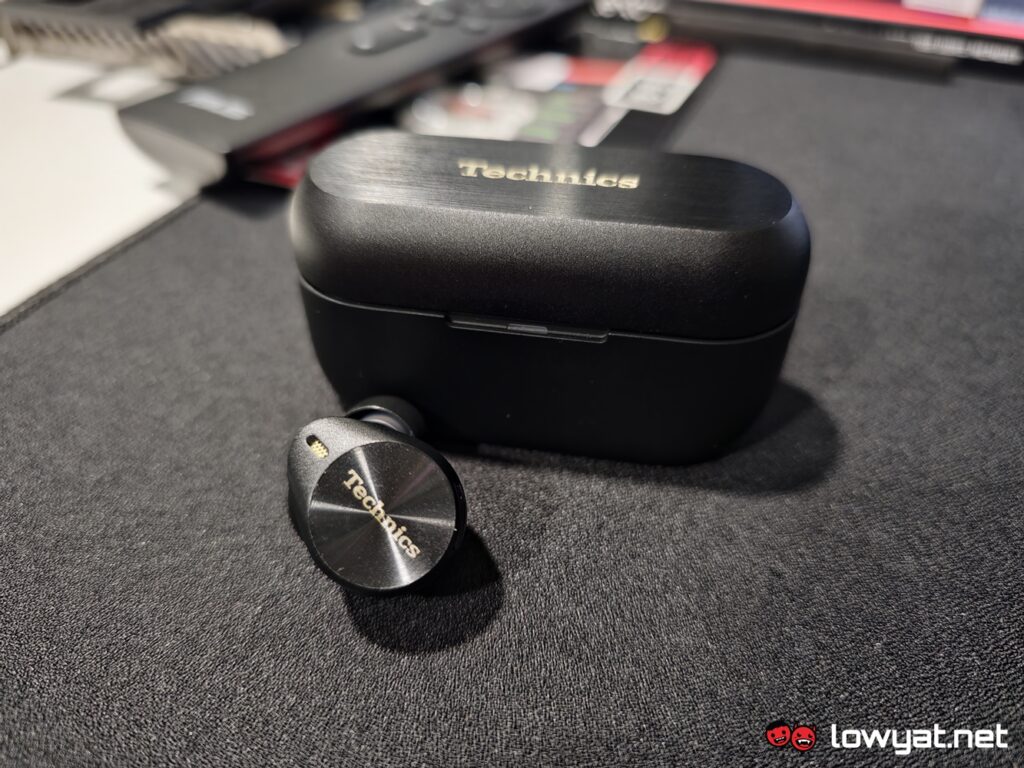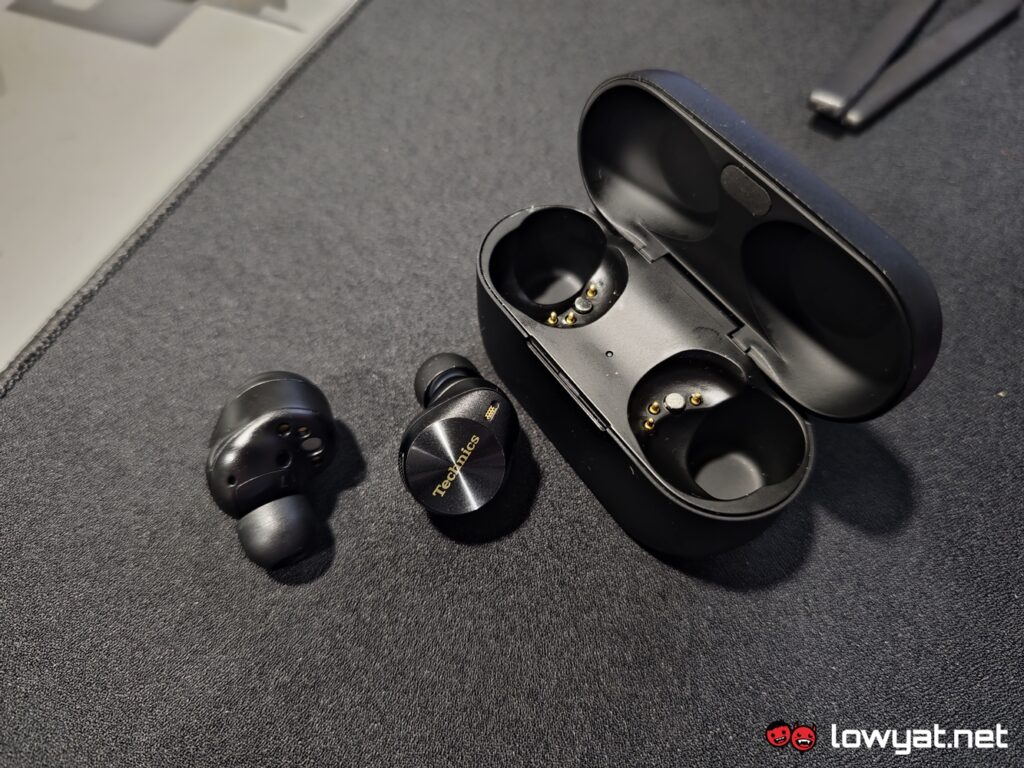Technics isn’t a brand that many folks under 30 would inherently know and chances are, you probably didn’t know that the now Panasonic-owned Japanese brand makes some really good sounding personal audio devices. Case in point, these AZ80 TWS earbuds that I have in the lab.
What Am I Looking At?
The AZ80 comes in a neat, compact square package. Inside, the package contains the earbuds’ charging case that an additional 17 hours of battery life, while the earbuds themselves each hold a seven-hour charge. To charge the casing, there is a USB-C port built into the back of it but it does also support Qi wireless charging, if you’ve got the appropriate charging base for it too.
My AZ80 units comes in metal-brush black, but it is also available in Silver. As for the earbuds, Technics has gone for a Concha fit design that it says allows for all-day comfort and secure fastening inside your ears. Specs-wise, the AZ80 features a large 10mm aluminium alloy diaphragm inside each earbud that Technics says provides an “Enhanced” low-distortion Bass, plus an Acoustic Control Chamber that aids in the reduction of distortion as well.
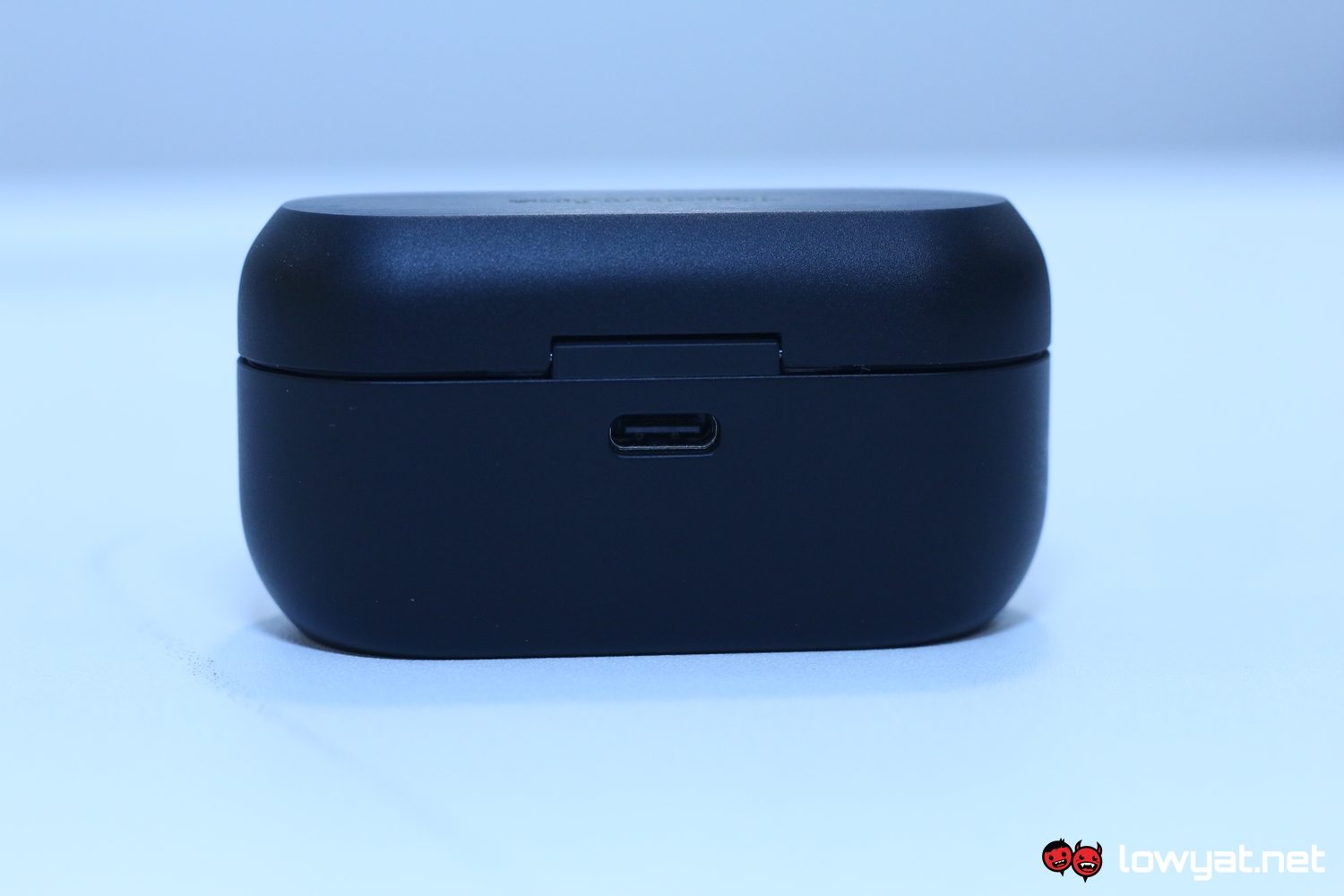 Interestingly enough, the AZ80 is also the first pair of earbuds that I have come across to support a connection between not two, but three devices simultaneously.
Interestingly enough, the AZ80 is also the first pair of earbuds that I have come across to support a connection between not two, but three devices simultaneously.
Regarding the eartips, the default “M” sized tips are more than adequate for me, but the AZ80 does come bundled with an additional six pairs of eartips, four of which are dedicated to small and extra-small ear canals.
What’s So Good About It?
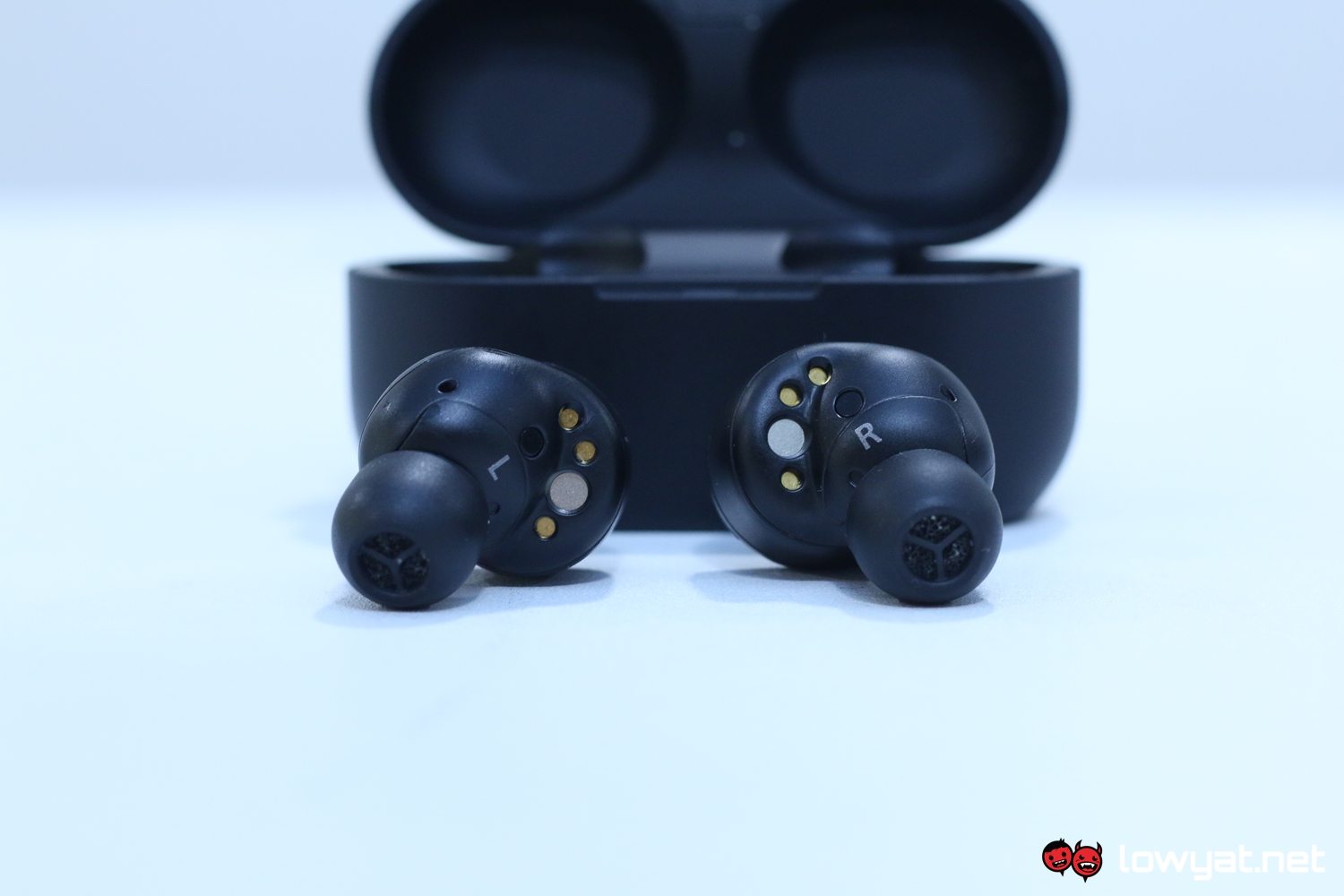 The advertised battery life of the AZ80 is as promised. I get approximately seven hours of continuous use, with ANC or its ambient sound function constantly active. On another note, the earbuds are extremely comfortable, from the moment you stick them in. The concha shape of the earbuds means that there is no adjustment period to them, and the default medium-sized eartips fit inside my ears exceedingly well.
The advertised battery life of the AZ80 is as promised. I get approximately seven hours of continuous use, with ANC or its ambient sound function constantly active. On another note, the earbuds are extremely comfortable, from the moment you stick them in. The concha shape of the earbuds means that there is no adjustment period to them, and the default medium-sized eartips fit inside my ears exceedingly well.
Another thing I like about the AZ80 is the concentric circle design that also doubles as the surface for the built-in touch sensors is beautiful. They’re a little mesmerising to look at, if they’re not in your ears or in use, anyway. On a related note, the touch controls are intuitive and simple to use.
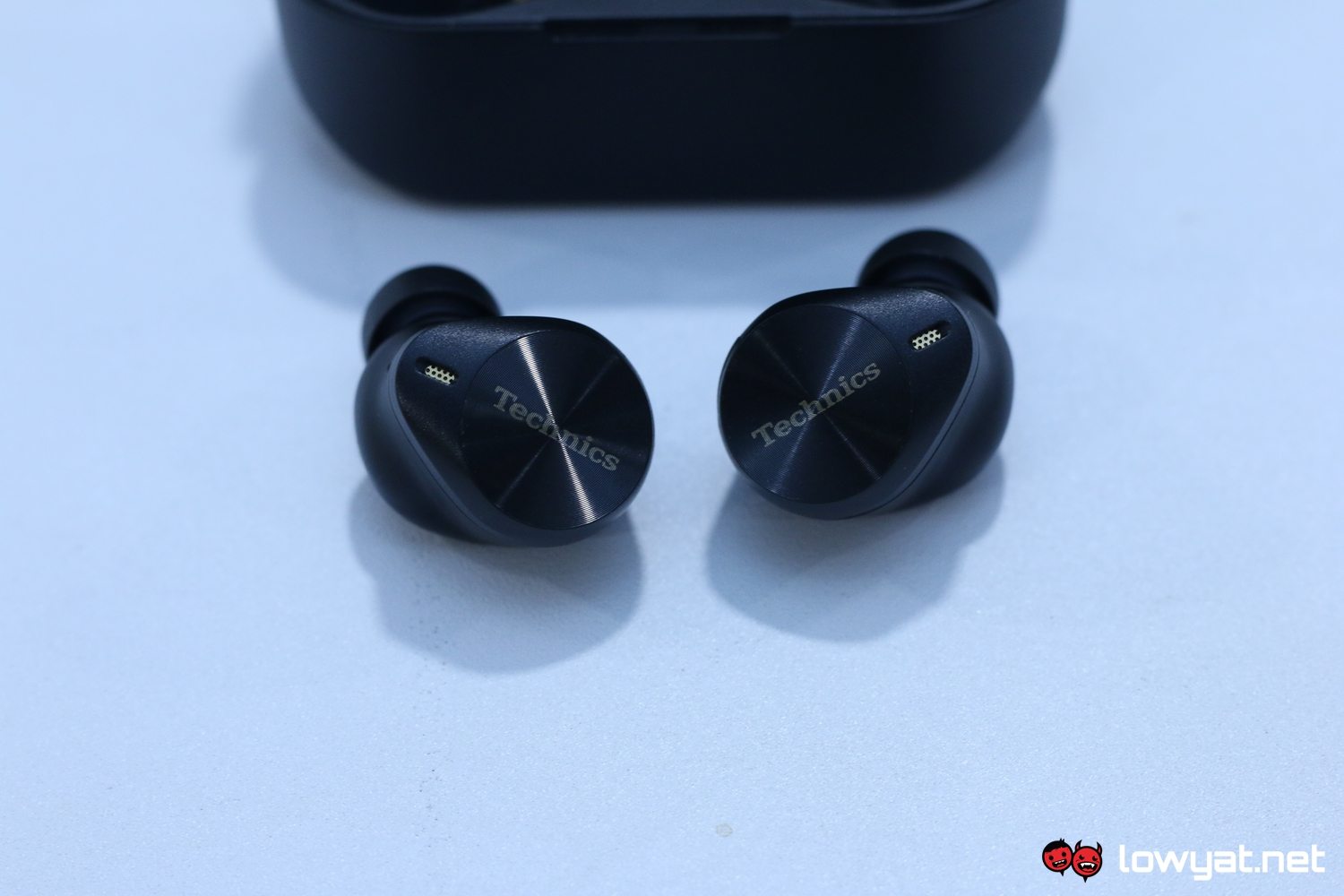 Audio quality for the AZ80 is top-notch, with a focus on highs and mids. Tracks such as Emilie-Claire Barlow’s French rendition of Dream A Little Dream Of Me sounds deliciously rich, as are instrumental tracks such as Ludovico Einaudi’s Nuvole Bianche. The same goes for Yoko Kanno and the Seatbelt’s Digging My Potato. Sound staging is wide, accurate, and open enough that I can identify each instrument and element in which song I am listening to at the time. Again, this helps in making songs such as Stacey Kent’s Venus de Milo sound richer and more enjoyable.
Audio quality for the AZ80 is top-notch, with a focus on highs and mids. Tracks such as Emilie-Claire Barlow’s French rendition of Dream A Little Dream Of Me sounds deliciously rich, as are instrumental tracks such as Ludovico Einaudi’s Nuvole Bianche. The same goes for Yoko Kanno and the Seatbelt’s Digging My Potato. Sound staging is wide, accurate, and open enough that I can identify each instrument and element in which song I am listening to at the time. Again, this helps in making songs such as Stacey Kent’s Venus de Milo sound richer and more enjoyable.
That isn’t to say that lows are non-existent. In fact, I can still feel the pitch rattling the back of my skull with tracks like the Lullaby of Woe from The Witcher 3 Wild Hunt OST, along with more contemporary pop tracks like Hozier’s Like Real People Do and Shrike. Likewise, The Tuba from Nina Simone’s Feeling Good can be felt with every huff into the instrument’s mouthpiece.
More importantly, you can tweak your audio preference for the AZ80 by using the equaliser inside the dedicated Technics app, or choose from a handful of presets. A small, if not common feature but important to mention, seeing as how some high-end premium brands lack the feature for their own earbuds (I’m looking at you, B&W).
What’s The Catch?
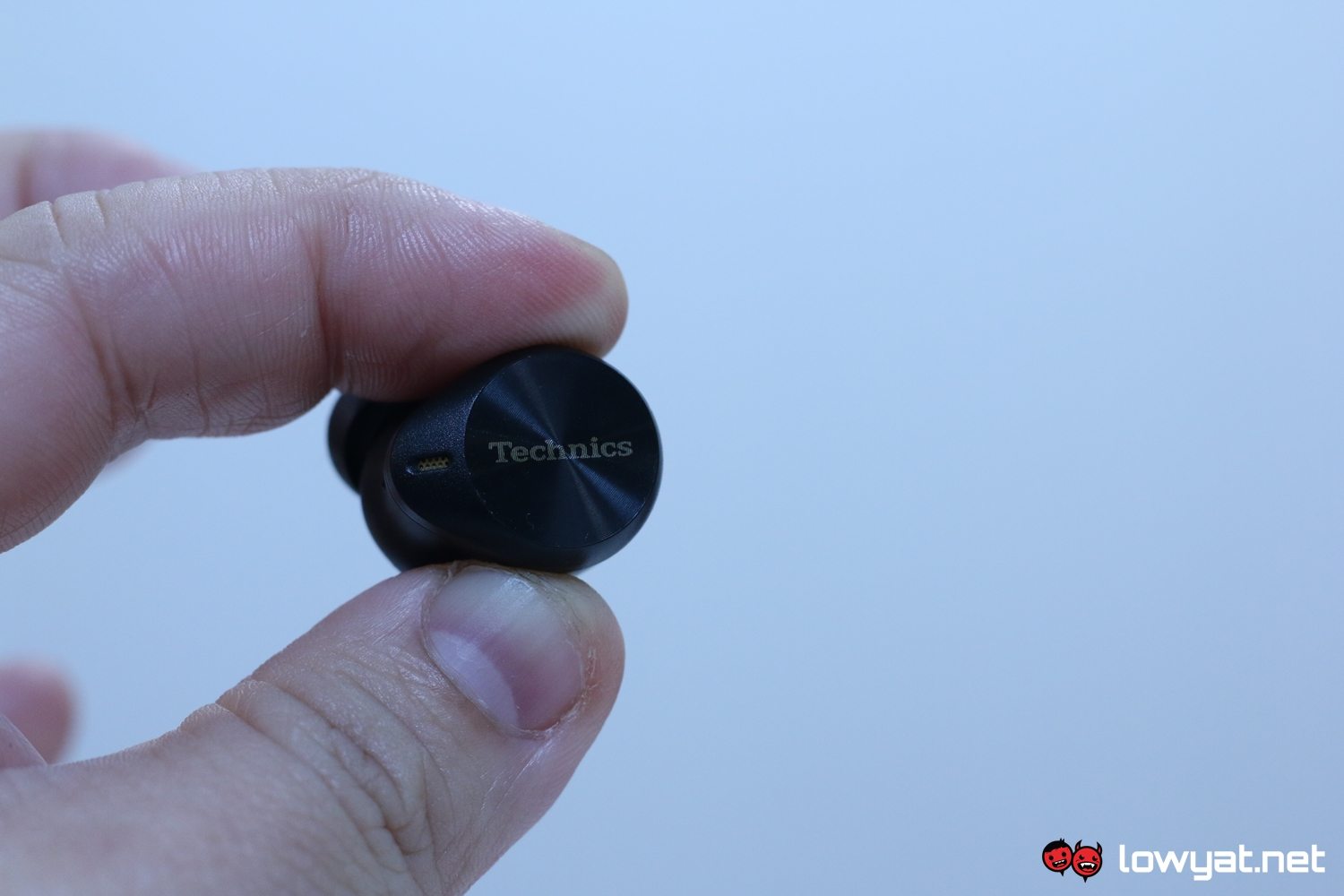 The volume ceiling isn’t that high, compared to other TWS earbuds I’ve tested in the past. I am consistently having to listen to media content with volume levels anywhere between 60% and 70%, on average.
The volume ceiling isn’t that high, compared to other TWS earbuds I’ve tested in the past. I am consistently having to listen to media content with volume levels anywhere between 60% and 70%, on average.
There is also an issue I have encountered with the JustMyVoice feature. While it can enhance my voice during calls, it can have a detrimental effect when pushed to the edge. Even worse, the flaw isn’t consistent; some people tell me that my voice sounds like it’s been fed through a high-pitch machine and that it sounds scratchy, while others sometimes hear a faint, low-pitch buzz that proceeds to make my voice echo ever so slightly. 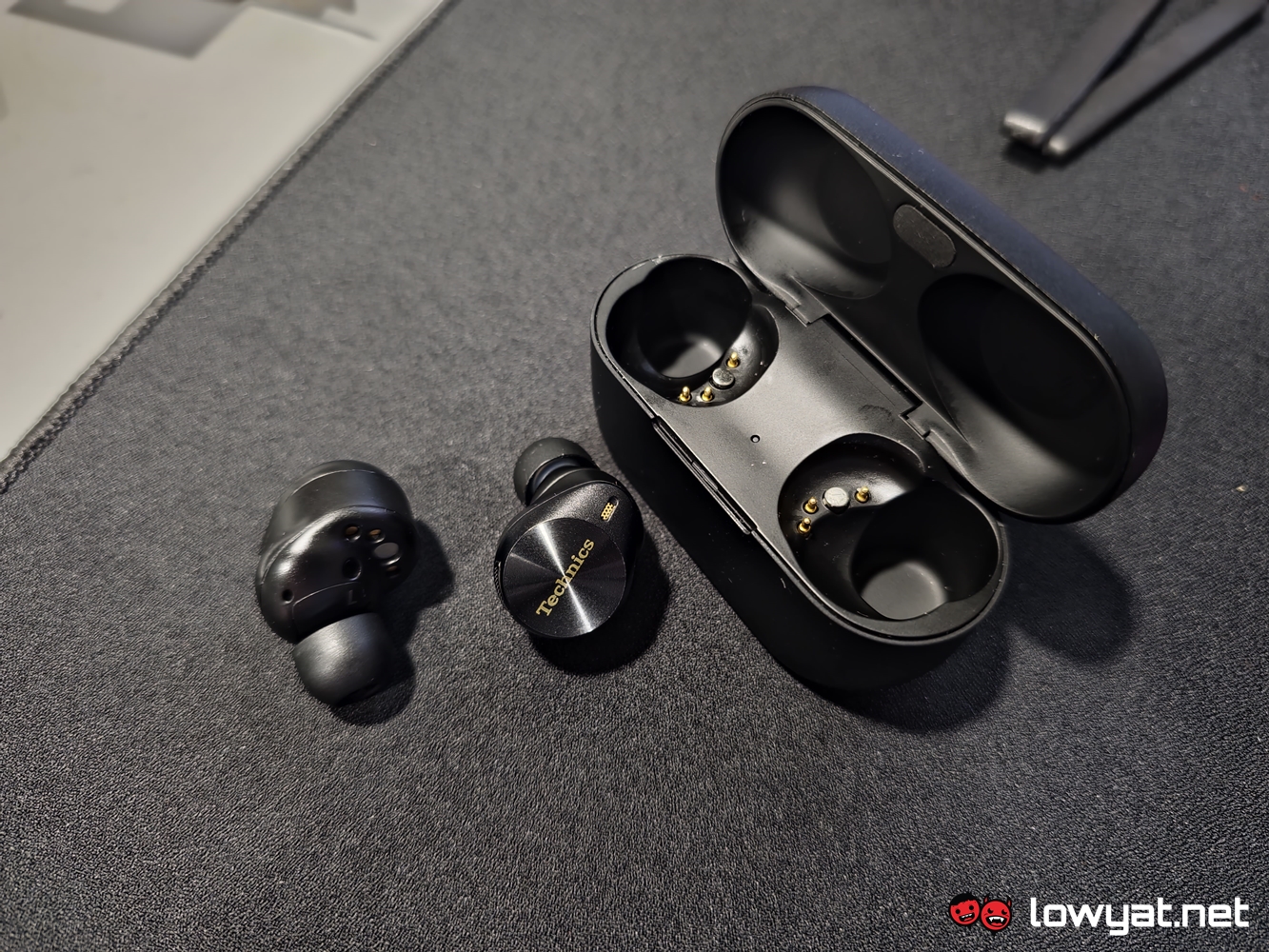 On another note, ambient noise passthrough on the AZ80 could be a little stronger, but that’s just me being picky. Also, you can only turn off both ANC and the passthrough via the app, with the earbuds touch control lacking a third option to do so, like Sony’s and its 1000XM5 series of products. Another gripe I have with these earbuds? It doesn’t support Qualcomm’s AptX codec but in place of that, the AZ80 supports LDAC and Hi-Res Audio. That said, it’s still a bit of a letdown that it lacks support for said codec.
On another note, ambient noise passthrough on the AZ80 could be a little stronger, but that’s just me being picky. Also, you can only turn off both ANC and the passthrough via the app, with the earbuds touch control lacking a third option to do so, like Sony’s and its 1000XM5 series of products. Another gripe I have with these earbuds? It doesn’t support Qualcomm’s AptX codec but in place of that, the AZ80 supports LDAC and Hi-Res Audio. That said, it’s still a bit of a letdown that it lacks support for said codec.
Lastly, there’s the price of the AZ80. It is on the high side at RM1,599 but in all fairness, it’s not the priciest pair of earbuds on the current market.
Should I Get It?
While brands such as Panasonic’s Technics isn’t as popular a brand when it comes to TWS earbuds, especially when going up against major players like Apple, Bowers & Wilkins, Bose, or Sennheiser, the AZ80 are, nevertheless, a pleasant surprise that I have come across this year. They are the most comprehensive pair of earbuds to ever grace my ears, and that’s not something I say lightly. Even more impressive is its 3-devices multipoint that, again, is a feature that none of its rivals are able to pull off.
With a RM1,599 price tag, though, it can be a little tough to recommend the AZ80 as a daily driver, especially when Sony’s WF-1000XM4 went for RM1,099 when they first launched, or the Apple Airpods Pro, for that matter. If Panasonic would be willing to drop the price for its flagship earbuds (unlikely at the moment) a further RM300, though, then it would certainly make these off-the-beaten-path in-ear headphones a prime contender for earbuds of the year.
Photography by John Law.
Follow us on Instagram, Facebook, Twitter or Telegram for more updates and breaking news.


